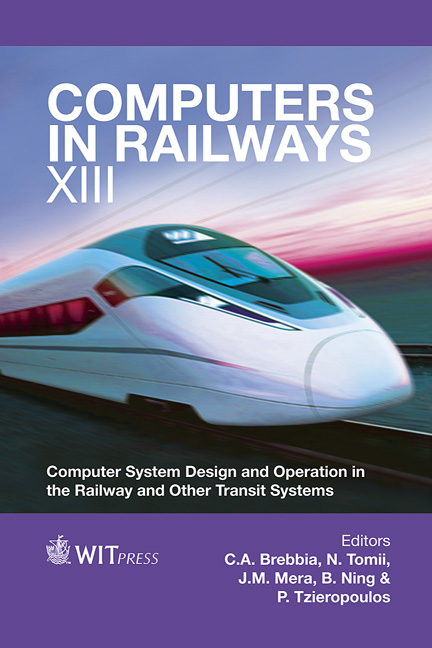Gradient Modelling With Calibrated Train Performance Models
Price
Free (open access)
Transaction
Volume
127
Pages
12
Page Range
123 - 134
Published
2012
Size
2534 kb
Paper DOI
10.2495/CR120111
Copyright
WIT Press
Author(s)
V. N. Rangelov
Abstract
This study considers the theoretical analysis, modelling technique and experimental verification of the effects of gradient, running and curve resistance on train performance. The developed process uses computer simulations via Dynamis® software in conjunction with an empirical approach for energy and resistance analyses, verification, dynamic train modelling and tests. The overall objective was to model in mathematical terms the train performance under various conditions, analysing the total resistance, locomotive’s power capability and derive the weight limits of any trains travelling over new or existing infrastructure. The well regarded Davis polynomial equation and other formulae have been applied and appropriate coefficients calculated for a large number of wagon types. The tangible outputs from these analyses include accurate sectional running times, fuel/energy consumption, ability to re-start at nominal conditions or when using limited traction or low adhesion conditions. Keywords: modelling, resistance, wagons, gradient, Dynamis, train, power, adhesion, Davis, curve.
Keywords
modelling, resistance, wagons, gradient, Dynamis, train, power,adhesion, Davis, curve





